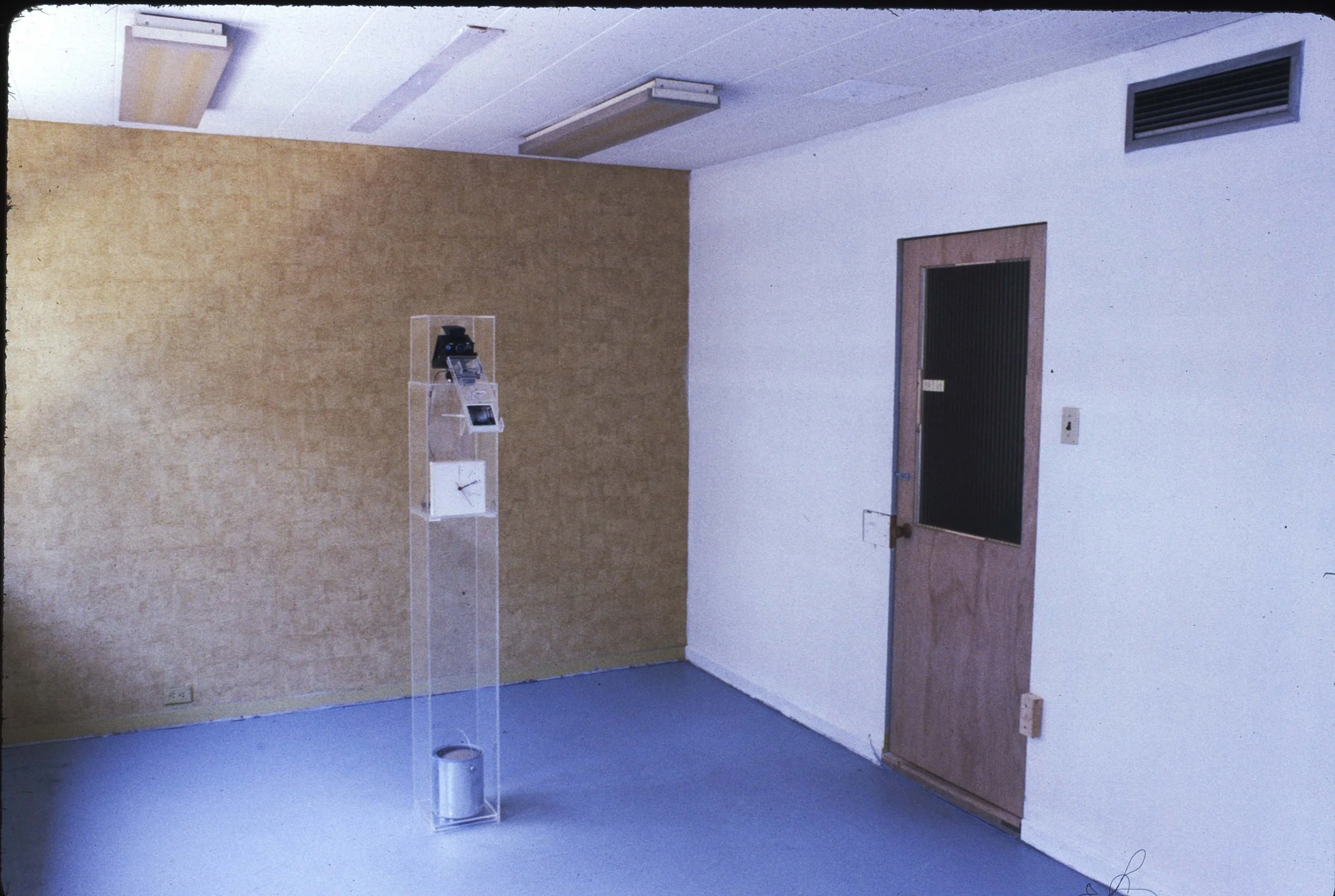Pass It On - 1981
Installation (interactive)
Functioning bathtub, customized SX Polaroid camera, convex mirror, plexiglass stand, clock, towels, soap, window blind
Dimensions: 26’ x 12’ x 9’
Collection: Destroyed
Part of Performance organized by Parachute,
The installation was located on the 4th floor of the Drummond Medical Dental Building in downtown Montreal. May 28 - June 6, 198. Upon entering the space a visitor found a functioning bathtub with all the necessary accoutrements for bathing. An SX 70m Polaroid camera was installed and took 5 photos over a 25 minute period. The expectation was that the participant might take a bath and leave with the photos documenting their visit.
The installation took place in a doctor's office in a medical building in downtown Montréal. From the hallway, the viewer entered a small (9 ft. x 9 ft.) windowless waiting room containing three wooden chairs and a locked door. A note posted to this door asked that only one viewer enter and participate at a time, waiting for the blue light mounted nearby to go on before doing so. Behind this door was a very small cubicle containing another door, and beyond that was a large rectangular room measuring 26 x 12 feet. On the long wall opposite the doorway were four large windows looking out onto the street below. To the right of the viewer as he entered the room was a plexiglass stand; to his left, located three quarters of the way down the room, was a functional cast iron bathtub complete with soap rack, soap, and bathmat. The tub was placed perpendicular to the long walls with the faucet end facing the one window with a bamboo pull-blind. On the wall opposite were two clothes hooks and a towel rack with a towel and face cloth. Suspended from the ceiling above the tub, but slightly farther down the room, was a circular convex minor. The mirror reflected the tub, plexiglass stand, and most of that end of the room. The clear plexiglass stand housed a Polaroid SX-70 camera which was directed at the tub and mirror. Below the camera was a clock with an altered white face, a black line indicated the noon position and blue lines were used for the 1, 6, 11, 16, and 21 minute positions. Apart from these six lines the face was bare. The black minute hand was used to indicate the time, and as the hour hand was not employed, it was painted white. Behind the clock, battery-powered electronic circuitry was visible inside the plexiglass stand. A paint can filled with sand was placed in the base of the plexiglass stand to stabilize the unit. There were no electrical wires leading to or from the stand..
In the waiting, the viewer, seeing the blue light go on, stood on the plywood pad in front of the locked door. This activated an electric switch which unlocked the first door giving access to the cubicle beyond. Here, another plywood pad activated the switch for the second door, and beyond that the viewer found himself in the larger space. Each participant found the room in its original state: minute hand of the clock at 12, clean tub, and fresh towels and soap. Once in the room the viewer could lock the door behind him thus ensuring his privacy. Passing through this second door triggered a timing device which started the clock. One minute after entering, as the minute hand of the clock crossed the first blue line, the SX-70 camera took a picture. The photograph, ejected into an attached plexiglass tray, could be kept by the viewer. Because of the position of the camera and the mirror almost everything in the room was captured in the photo. Five minutes after the first photograph, as the minute hand crossed the next blue line, another photo was taken. This continued until five photographs had been taken, at which time the clock would turn off.






